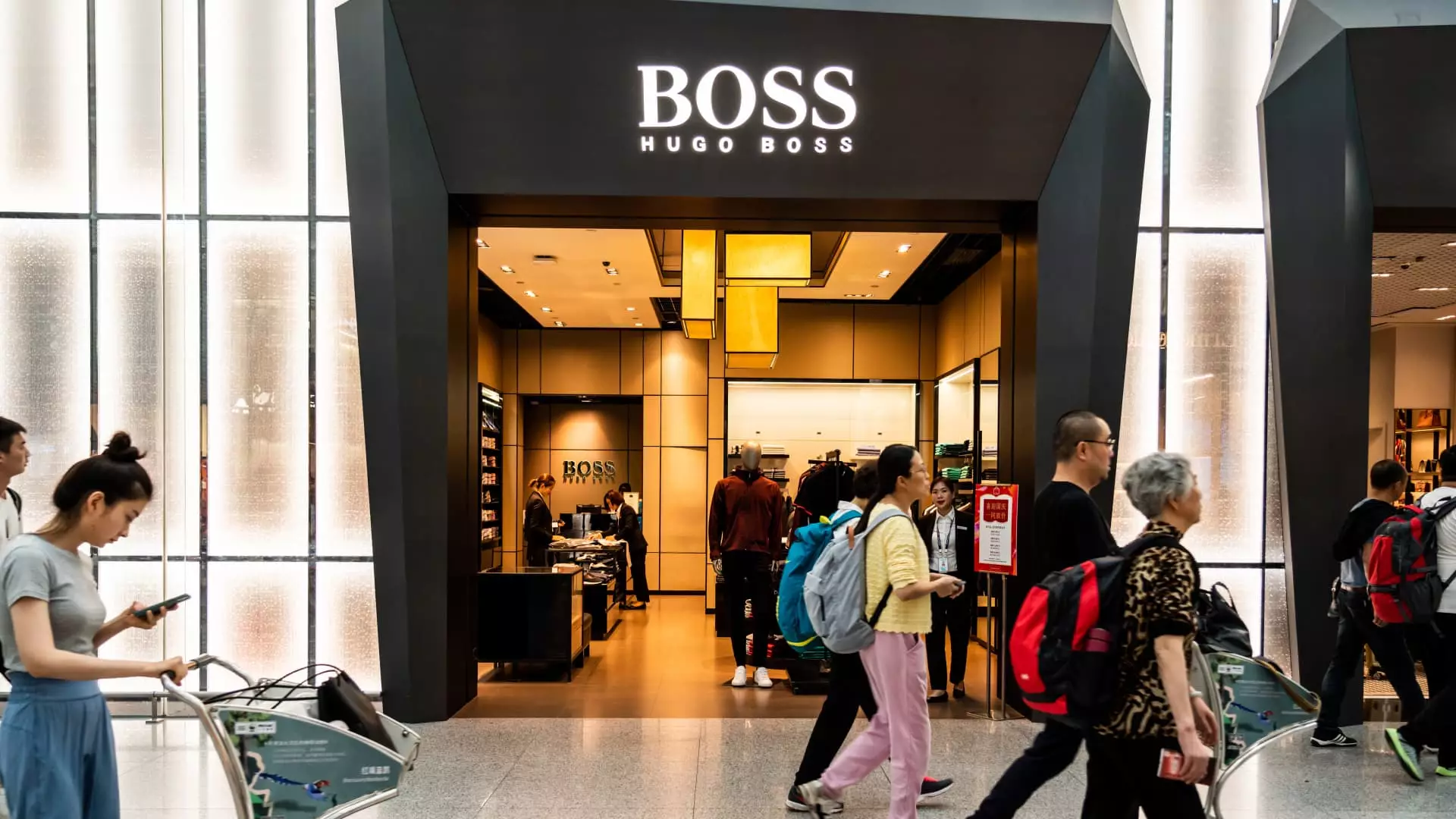Luxury fashion brand Hugo Boss recently experienced a significant downturn in its shares, with a plunge of up to 10% following a cut in its sales outlook. This decline is indicative of the broader challenges facing the luxury sector, as high-end fashion lines struggle to navigate through macroeconomic and geopolitical uncertainties. The German fashion house revised its full-year sales forecast to 4.35 billion euros, down from a previous estimate of 4.45 billion euros. The company specifically highlighted China and the U.K. as particularly problematic markets, signaling the global nature of the challenges faced by luxury brands in the current economic landscape.
CEO Daniel Grieder acknowledged the impact of global macro uncertainty on the company’s performance, attributing the sales outlook cut to ongoing challenges in the market. Despite the uncertain timing of any macro recovery, Grieder expressed confidence in the strength of Hugo Boss’s brands, BOSS and HUGO, and their ability to drive growth and capture market share. This revised guidance marks the second sales outlook cut by the company this year, reflecting a trend of moderation in sales growth expectations. The luxury sector as a whole has been grappling with macroeconomic and geopolitical concerns, with companies like Burberry and LVMH also reporting slowdowns in sales.
Hugo Boss reported a 1% decline in group sales in the second quarter, driven by decreases in both Asia and Europe. The company’s operating profit also slumped by 42% year-on-year, largely due to softer sales trends and strategic investments in the business. Despite these challenges, Grieder remains optimistic about the company’s ability to achieve profitable growth in the second half of the year. The luxury sector’s struggle with weaker demand, particularly from markets like China, has been a recurring issue, with brands like Richemont also reporting sluggish sales growth.
Shifts in Consumer Behavior
The slowdown in Chinese consumer spending has been a focal point for the luxury sector, with concerns about weaker demand from the once lucrative Chinese market. However, some analysts like Swetha Ramachandran from Artemis Fund Managers believe that the impact of the slowdown may be overstated. She notes that Chinese shoppers are once again turning to international purchases, particularly in destinations like Japan, as travel restrictions ease and consumer behavior adapts post-pandemic. This shift in consumer behavior highlights the resilience and adaptability of luxury brands in responding to changing market dynamics.
The sales outlook cuts experienced by luxury fashion brands like Hugo Boss underscore the challenges posed by macroeconomic and geopolitical uncertainties. While the sector faces ongoing struggles with weaker demand and shifting consumer behavior, there are opportunities for growth and adaptation as companies navigate through this turbulent period. By focusing on brand strength, strategic investments, and a deep understanding of changing consumer preferences, luxury brands can position themselves for long-term success in a dynamic and evolving market landscape.

